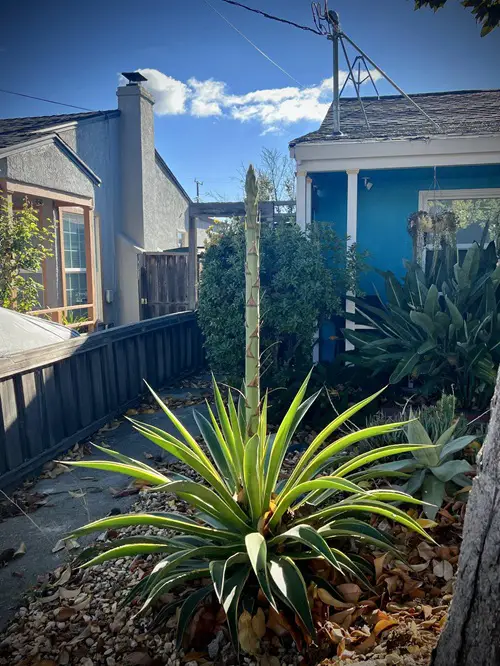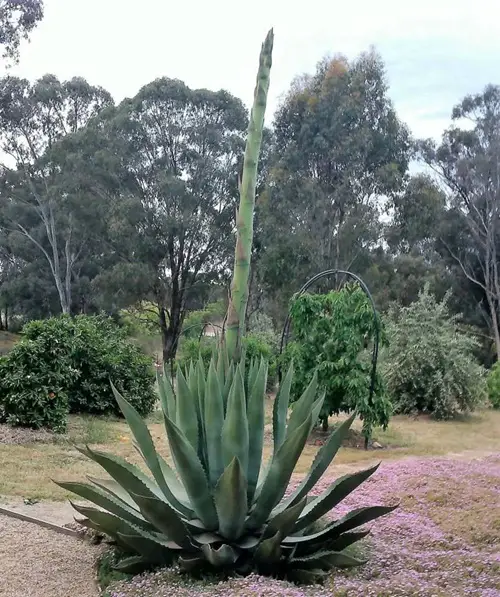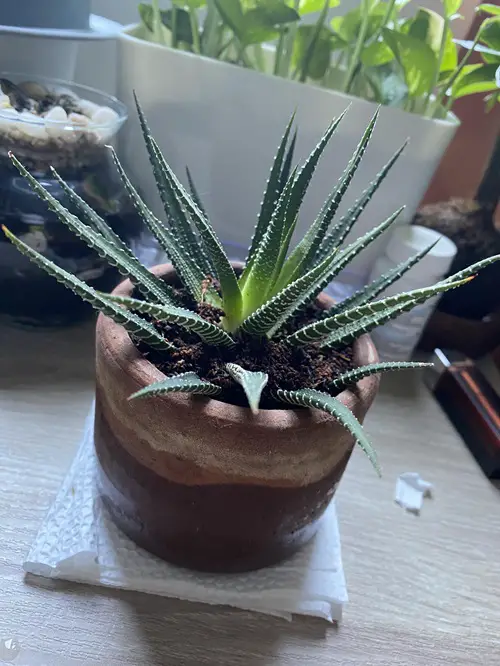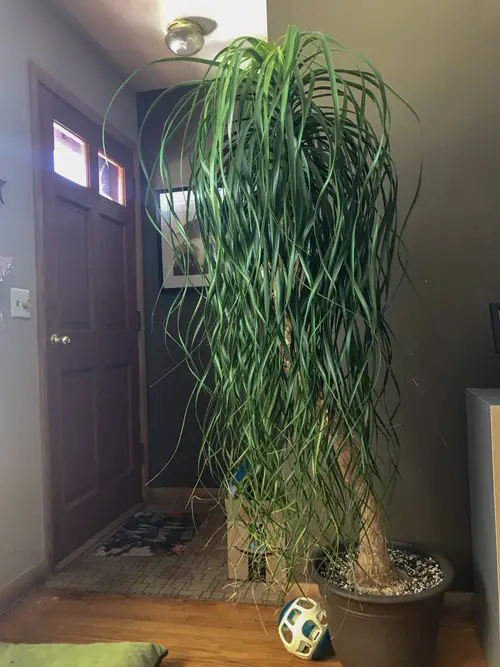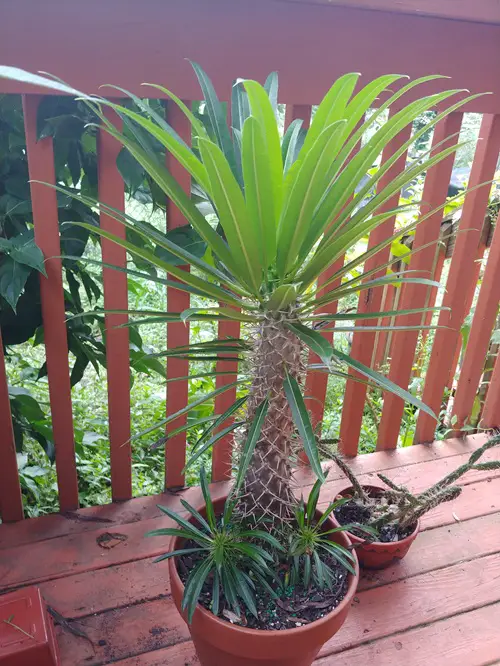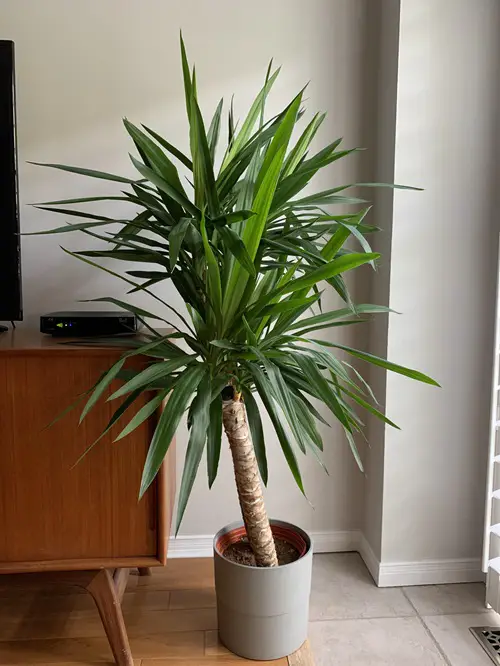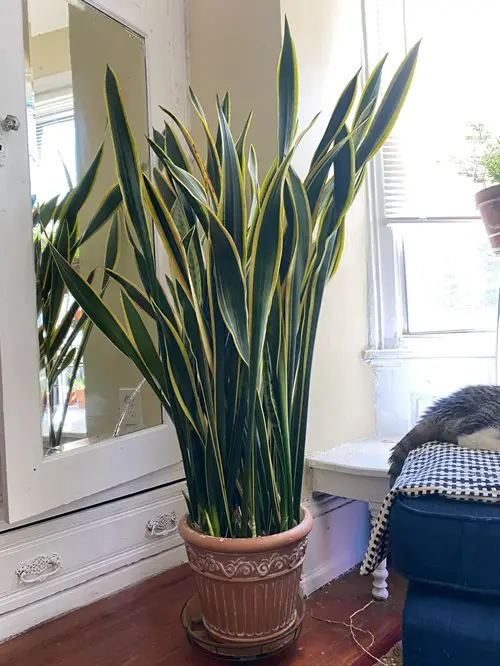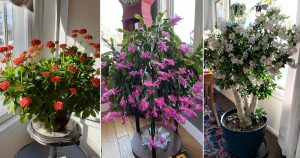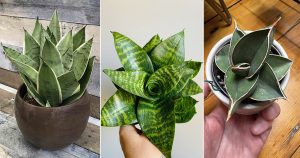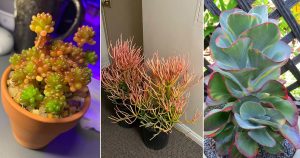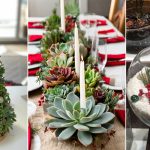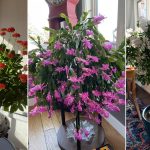Make way for some of the best long leaf succulents this time! After all, rare beauties are a gem of the green world!
Have you seen long leaf succulents, that can bring along the feel of tropical plants? Why don’t you scroll down and learn about a few with this extraordinary behavior of showcasing big leaves with unique textures and patterns? Also, some of these are worth collecting too.
Best Long Leaf Succulents Plants
1. Smooth Agave
Botanical Name: Agave desmettiana
The Smooth Agave is a succulent that forms beautiful rosettes of dark blue-green leaves that are arranged in a wavy manner with smooth margins and a sharp reddish terminal spine. The rosettes grow up to produce several offsets at the base. Leaves are fleshy, rigid, and usually recurved or reflexed like the Octopus Agave, growing up to 40 inches long.
Moreover, after 8 and 10 years, an attractive flower stalk appears from the center of the rosette bearing pale yellow blossoms in terminal clusters.
2. Octopus Agave
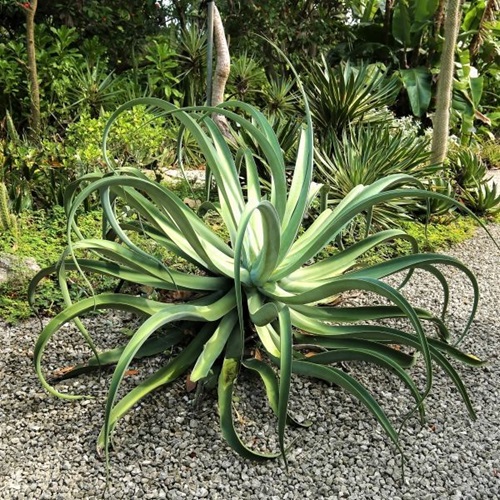
Botanical Name: Agave vilmoriniana
The appearance of this weirdly unique Agave is a wonderful sight to catch. The long and elongated foliage is arranged in such a pattern that if it was able to move then it would look like a land octopus!
No matter how it looks, the Octopus Agave has a great demand for its high concentrations of sapogenin smilagenin in parts of México. The leaves are cut and dried, and the fibers are beaten to make them into a brush with built-in soap. Pretty interesting!
3. Aloe Vera
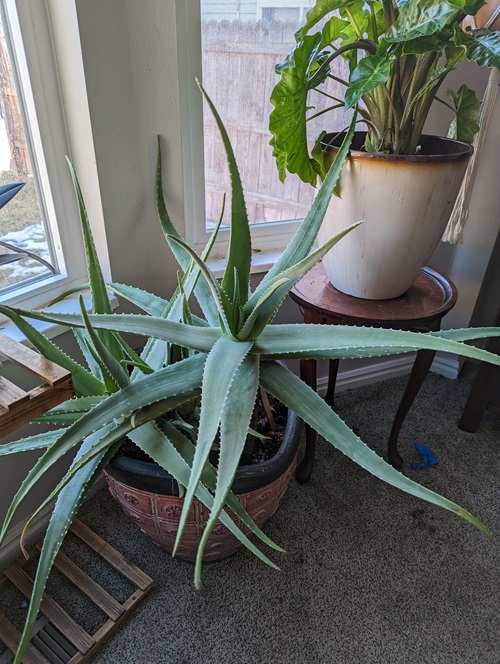
Botanical Name: Aloe
Yes, Aloe is on the list too! Aloe vera is a commonly available succulent, quite popular for its medicinal uses around the globe. Surprisingly there are 400 Aloe species in the world and almost all of them exhibit rosettes of long fleshy leaves with spines or teeth along the edges.
It is often thought to only grow in hot and dry climates but it can grow in a variety of climates including desert, grassland, and coastal or even alpine locations. Unfortunately, it is too cold-sensitive to be grown outdoors in regions where there are extremely cold and frosty weather conditions.
4. Aeonium “Sunburst”
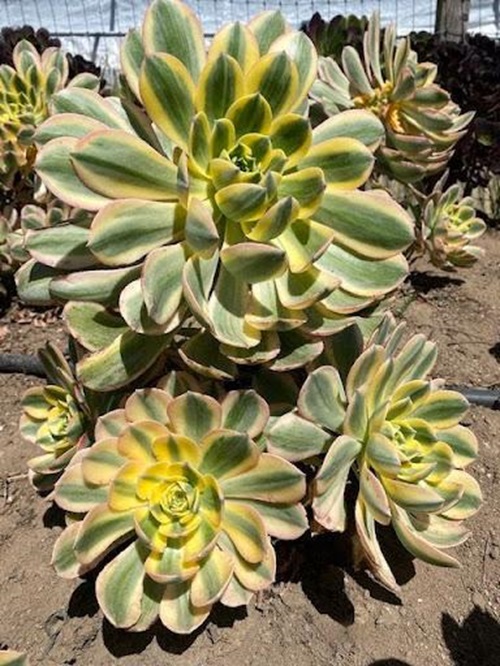
Botanical Name: Aeonium decorum “Sunburst”
This award-winning Aeonium is an evergreen succulent that is undeniably admirable for its large variegated rosettes of spoon-shaped huge leaves. The combination of creamy yellow and green stripes looks so gorgeous, adorned with coppery red tips when exposed to the sun.
It is a winner of the prestigious “Award of Garden Merit” from the Royal Horticultural Society. Moreover, this excellent beauty grows up to 18-24 inches tall and 24 inches wide in a sandy and porous soil mixture.
5. Pulque Agave
Botanical Name: Agave salmiana
No, don’t get confused with the Century plant! This is slightly a different one, the Pulque Agave is a large evergreen succulent, certainly a lot similar to the American Century plant but can be distinguished because of its vigorous spikes all over the edges of its broad and long foliage. These leaves are nicely arranged in a compact rosette pattern.
It rapidly grows to 8 to 10 feet tall with a massive inflorescence on a tall and upright stalk (20 to 40 feet in height). Grow this gorgeous plant in full sun to light shade and well-draining soil, however, it doesn’t demand much maintenance and care.
6. Haworthia
Botanical Name: Haworthiopsis species
Mini, compact, and some funky patterns. If this is what you are looking for then go with the succulent species of Haworthia. Generally, they are tiny plants that are best for small and cute spaces. There is one variety called Zebra Haworthia, it has an attractive way of showing off its white stripes on its long and pointy foliage.
Besides there are more options in this genus, you can explore 60 different species of Haworthias with extremely beautiful and unique color patterns and other interesting features. Some of them even bear thin and wiry flowers from the center in an upright stalk.
7. Ponytail Palm
Botanical Name: Beaucarnea recurvata
A not-so-true palm, the Ponytail palm is one of the seven species of the Beaucarnea genus. This group contains small tropical trees native to the semi-desert areas of southeastern Mexico, Belize, and Guatemala where it can grow to 30 feet tall heights. However, if you grow it as a houseplant in containers it remains short.
Besides, it features a swollen trunk like the foot of an elephant, it serves as a water storage to help the plant survive in drought conditions. Interestingly, the leaves are long and resemble grasses, and when mature it produces large and upright panicles with small but numerous green to creamy-white flowers.
8. Century Plant
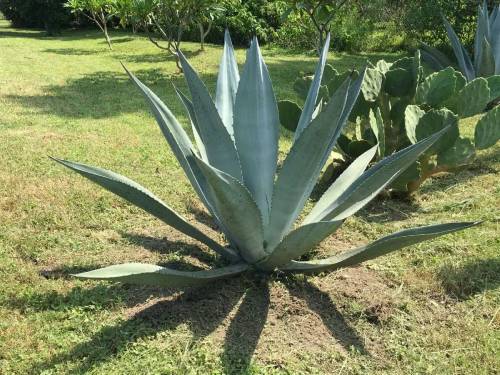
Botanical Name: Agave americana
Who might not be familiar with this gorgeous Agave? This attractive plant can give any garden space the vibe of a sculptural appearance. American Century plant has a nice rosette forming a structure that also bears flowers on its long slender stalk, but only at the end of its life cycle mostly in 10-15 years.
The long leaves feature various shades of dark green, gray/silver, or blue colors depending on the growing environment. Furthermore, with a soft fleshy texture it reaches a height of 15-30 feet tall or sometimes more. This evergreen specimen grows in a rosette pattern and adds a year-round interest in one’s garden.
9. Madagascar Palm
Botanical Name: Pachypodium lamerei
Have a look at this spiky succulent which is nothing like an actual palm even though the name has “palm”! The Madagascar palm rather belongs to the dogbane family (Apocynaceae). It has a single thick trunk with thorns all over its body and spear-like long dark green foliage. Also, the white flowers bring a mesmerizing sweet fragrance during the spring-summer season.
However, if you are growing it as a houseplant then it won’t likely bloom indoors but in its original habitat, it is a wonderful sight to catch its 20-foot-tall structure with the blossoms! Perhaps, the plant contains toxins that are harmful to humans and pets so be careful while you handle it.
10. Yucca
Botanical Name: Yucca species
There is still a debate on whether Yucca is a succulent or not. Perhaps, the fact that it grows in arid environments and its ability to store water for surviving in drought conditions kind of justifies that it is a succulent! There are more than 40 species of Yucca and almost all of them are native to the southwestern United States.
Besides the particular species, “Yucca brevifolia (The Joshua tree)” all the other ones feature long, pointy, and narrow leaves. The leaves emerge from the center of the base, giving it a compact round, and bouncy appearance.
11. Mother of Millions
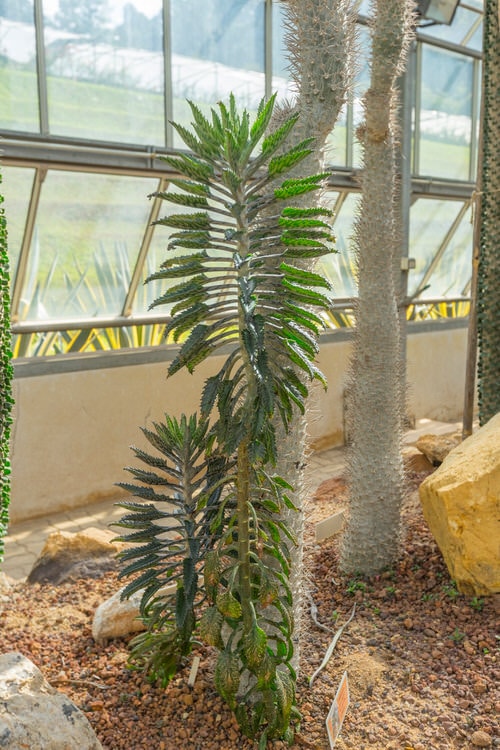
Botanical Name: Kalanchoe delagoensis
Do you know why it is called “The Mother of Millions”? Because of its viviparous asexual reproduction ability, where it gives out many baby plantlets at a time on the edge of its long upright leaves. One single leaf can produce approximately 20 plantlets at a single time! Later after developing leaves the pups fall off and grow their own roots to become a single plant.
This extraordinary behavior is quite an eye-catching event to check out. Because the beauty of this plant certainly lies in its foliage especially when all the pups come up bordering its leaves. Looks like an unusual yet beautiful sight to lay your eyes on.
12. Snake Plant
Botanical Name: Dracaena trifasciata
One of the best houseplants for tall and upright plant lovers! The Snake plant is a very easy-to-grow and unfussy succulent that has very low demands. It just needs good well-draining soil to thrive in almost all lighting conditions except for standing in long hours of direct sunlight, which is why it is a great option for indoors.
Dust the leaves occasionally to keep the shine on its dark green leaves with off-white or light green patches here and there. There are a lot of varieties and cultivars of Snake plants, and all of them make nice houseplants. You can make a beautiful collection of some unique varieties.
If you want to explore some more tall ones then have a look at this list of 15 beautiful succulents that grow straight up!
So, did you like this collection of long leaf succulents? Kindly, let us know as well so that we can bring more such interesting lists out for your gardening life!

